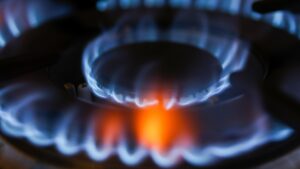Australia is the new queen of LNG exports, but can it last?

The Australian LNG powerhouse surged forward in 2019, as the country pipped Qatar for top spot for exports.
Yet even as export pricing was an average of $11.41/gigajoule (GJ) for the year, local gas prices tumbled to $5/GJ on the first day of 2020.
WA prices remained below $4/GJ, thanks to the state government’s domestic gas reservation policy.
Australia exported an estimated 77.514 million tonnes (Mt) of LNG in calendar 2019, edging out Qatar for the No.1 export title which is expected to produce 75Mt in 2019, according to data from consultancy EnergyQuest.
EnergyQuest CEO Dr Graeme Bethune says Australia’s LNG production capacity of 88Mt is larger than Qatar’s, which stands at 77Mt.
“Australia’s 10 LNG projects have a combined capacity of 87.8Mt. However, with only 88 per cent of total nameplate capacity used over 2019, there remains opportunity going forward to lift the current production milestone even higher,” he said.
Long-term pessimism
Although 2019 was a stellar year for gas and LNG production across the country, and 2020 is expected to deliver even better results, the long-term outlook for gas in Australia is pessimistic.
The Australian Energy Market Operator (AEMO) believes there will be no supply shortage before 2030.
But consultancy Wood Mackenzie is betting a shortfall in gas supplies could come as early as 2023, as most contingent gas resources are unlikely to be developed.
READ: The Australian east coast gas shortage could be coming faster than we think
“2023 is also around the same time as when the global LNG market starts to tighten, and international prices are likely to rise,” WoodMac research director Nicholas Browne said in a note late last year.
“As such, with the east coast market still contractually short of gas, there will be a call on gas contracted to or owned by the LNG projects. In turn, this could impact domestic prices.”
An EnergyQuest report in December suggested NSW could face a serious gas squeeze by 2025 if it does not relax restrictions on exploration and production within the state.
Prices reflect interventions, investment
While export prices remain steady, bringing in an estimated $49 billion of export revenue in 2019, local prices have tumbled which could have ramifications for domestic gas producers.
EnergyQuest data shows the east coast Wallumbilla average gas price fell from $8.95/GJ in 2018 to $8.15/GJ in 2019.
As of January 1, 2020, it had eased even further to $5/GJ.
East coast prices have been the bane of gas users, as rates rose rapidly from $3/GJ in the pre-LNG export days to as high as $21/GJ in 2017.
Threats from the federal government to divert more export gas to the domestic market, as well as Queensland’s reservation policy which limits some new exploration and production permits to supply the domestic market only, have helped bring prices down.
A lower local price could have an impact on the viability of projects delivering gas into the local market.
Winners of Queensland’s domestic tenders have been the small and mid-tier players in east coast gas, as the acreages involved tend to be small.
About a quarter of the 39,000sqkm of land released for gas exploration since 2015 has been guaranteed for Australian buyers.
EnergyQuest said in December however that long-term contracts were quarantining local LNG producers from record production.
Companies such as Senex (ASX:SXY) and Central Petroleum (ASX:CTP) are locking in long term contracts for new supply coming on stream, and for existing projects.
Gas sources
Australia has three LNG export hubs: Gladstone in central Queensland, Darwin in the Northern Territory, and Karratha in Western Australia.
WA dominated Australian LNG production, yielding 57 per cent of the country’s total.
The Northern Territory “proved the glamour performer for 2019”, lifting sold output by 153 per cent to 10.5Mt, or 14 per cent of exports, largely from the Ichthys LNG project which delivered 7.529Mt. Queensland made up 29 per cent of national exports.
The largest contributing project to Australian LNG exports was the Woodside-operated North West Shelf project in WA, followed by the two Chevron-operated WA projects, Gorgon and Wheatstone.
UNLOCK INSIGHTS
Discover the untold stories of emerging ASX stocks.
Daily news and expert analysis, it's free to subscribe.
By proceeding, you confirm you understand that we handle personal information in accordance with our Privacy Policy.








